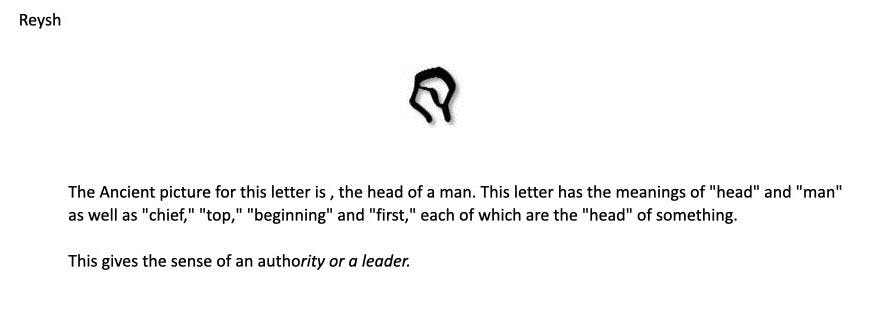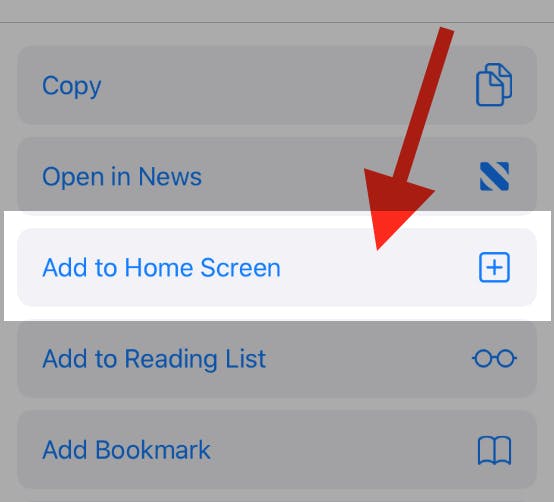Brit בְּרִית, The Covenant
David Mitts
"Behold, the days are coming, says the LORD, when I will make a new covenant with the house of Israel and with the house of Judah— not according to the covenant that I made with their fathers in the day that I took them by the hand to lead them out of the land of Egypt, My covenant which they broke, though I was a husband to them, says the LORD. But this is the covenant that I will make with the house of Israel after those days, says the LORD: I will put My law in their minds, and write it on their hearts; and I will be their God, and they shall be My people. No more shall every man teach his neighbor, and every man his brother, saying, 'Know the LORD,' for they all shall know Me, from the least of them to the greatest of them, says the LORD. For I will forgive their iniquity, and their sin I will remember no more."” (Jer 31:31-3NKJV)
Our entire relationship with God is based on the power of covenant. God is incapable of lying and when He makes a covenant it is forever. There is no such thing as an old covenant. There is only the continuation of covenant. To use the term old covenant there has to be something that wears out. There is only eternal covenant. SO, we can ask, if there is no “old covenant” then how can there be a new covenant? Good question. The reason there can be a new covenant is because God as the covenant maker can always improve on the deal. God has made several covenants in the dealing s with man, but they always improve the deal does not annul the deal.
Let’s unravel the word first to get some idea of what a covenant actually is from the Hebrew Letters. The word is “brit”. The letters are the bet, the resh, the yod, and the tav. Last session when we looked at “bereshit” we saw a similar pattern.

Beginning with the letter bet, we remember that it is the picture of a house or a dwelling and begins the scripture with an invitation to enter in. When you add a bet to a word, you are inviting someone to go inside that word. The term in Christ, would in Hebrew b’Mashiach. More commonly it is used in the name of Yeshua, b’shem Yeshua in prayer. In its simplest form the “bet” is an invitation to oneness, to covenant. It implies all of the intimacy, trust, protection and identity of the one who invites and the one who accepts.
The closest experiential concept we have to this is the wedding proposal and the acceptance.

The second letter of brit is again similar to bereshit, the resh. The resh is the pictograph of a head and means the authority of a person or a place. When you combine the bet and the resh, you get the word picture for “bar” which means the “son” or the invitation into the authority of the son. The son is the future of a home, the promise of its Glory. When a home has a son, it has a future. This is why the primary family centered covenant of the Bible was to promise a son to Abraham. Without a son Abraham would have had no future, no hope of glory.
God gives Him a future by in covenant giving Him a son, Isaac.
“Then behold, the word of the LORD came to him, saying, “This man will not be your heir; but one who will come from your own body shall be your heir.”” (Gen 15:4, NASB)
“On that day the LORD made a covenant with Abram, saying, “To your descendants I have given this land, From the river of Egypt as far as the great river, the river Euphrates:” (Gen 15:18, NASB)
The promise of a son, Isaac through whom Abraham would have an inheritance which reaches through faith to us today begins with the “bar” of the word “brit”.
Of course, for the new covenant, the brit hadasha, we see again the provision of the Son is the doorway to the Glory of the Covenant which is the inheritance for the Father of His Sons and Daughters. We tend to view our salvation from our own sin and our own redemption. What is often overlooked is what it means to the Father.
For the Father the redemption of the sons and daughters is His inheritance.
“In Him we also have obtained an inheritance, having been predestined according to the purpose of Him who works all things in accordance with the plan of His will, to the end that we who were the first to hope in the Christ would be to the praise of His glory. In Him, you also, after listening to the message of truth, the gospel of your salvation—having also believed, you were sealed in Him with the Holy Spirit of the promise, who is a first installment of our inheritance, in regard to the redemption of God’s own possession, to the praise of His glory.” (Eph 1:11-14, NASB)
This is a covenant verse section. The term the praise of His glory, is a reference to the Father having something to praise or celebrate. What is He celebrating? His Glory, His inheritance, His sons, and daughters. We are His possession, His inheritance, His future. I know it is difficult to realize that God who could just have easily begun over and created a new race to be His children, chose instead the path of redemption which includes the place of the Son, His Bar, Yeshua. He bases all of this on the covenant, the brit hadasha, which is inaugurated by the blood of the Son.
Similar to bereshit, brit begins with son. Not is the son the fioundation stone of creation, he also is the means of the covenant that produces the offspring of the Father, the inheritors of eternal life!

Next, we see the yod, the symbol for hand or arm and means the power behind something or someone. In the case of God’s covenant, He is the absolute power behind the promise.
““Assuredly My hand founded the earth, And My right hand spread out the heavens; When I call to them, they stand together.” (Isa 48:13, NASB)
There are many more scriptures where God uses the picture of His hand being the expression of His power.
Adding the yod to the word brith means that through the Son He gives us His word. It is by His own power that we enter into the new covenant. He provides the covenant sacrifice.
“but He, having offered one sacrifice for sins for all time, SAT DOWN AT THE RIGHT HAND OF GOD,” (Heb 10:12, NASB)

The final symbol that seals the covenant is the symbol of death, the cross, the tav. This is the x marks the spot. It tells us that God’s covenants are sealed by death.
Death, Met, in Hebrew is how a covenant is made. Hebrews tells us:
“For this reason He is the mediator of a new covenant, so that, since a death has taken place for the redemption of the violations that were committed under the first covenant, those who have been called may receive the promise of the eternal inheritance. For where there is a covenant, there must of necessity be the death of the one who made it. For a covenant is valid only when people are dead, for it is never in force while the one who made it lives.” (Heb 9:15-17, NASB)
In order for the new covenant to enhance the earlier covenants it must have satisfaction of the terms. Since God makes His covenants unilaterally and unconditionally, He could only bring about a new covenant through His own death. He died in Yeshua. We also died in Yeshua. Yeshua’s death is the cross, the x that marks the spot for a new life, eternal life.
This is revealed in us as the sign of the tav. Let’s look a couple of places where the significance of the tav is at the end of the covenant. It represents the mark on those sealed by God.
“And the LORD said to him, “Go through the midst of the city, through the midst of Jerusalem, and make a mark on the foreheads of the people who groan and sigh over all the abominations which are being committed in its midst.”” (Ezk 9:4, NASB)
This is a mark of hearts that are tender towards the things of God and broken by the abominations and desolations that are being done in Jerusalem. This is precursor for the abomination that Daniel prophesies at the end. This mark protects the people with heart towards God from the judgment.
“Utterly kill old men, young men, female virgins, little children, and women, but do not touch any person on whom is the mark; and you shall start from My sanctuary.” So, they started with the elders who were before the temple.” (Ezk 9:6, NASB)
The mark of God that is given to these faithful ones is the sign of the tav, the X of God. Covenant protects us from judgement.
Now let’s turn to Revelations 9:4
“They were told not to hurt the grass of the earth, nor any green thing, nor any tree, but only the people who do not have the seal of God on their foreheads.” (Rev 9:4, NASB)
Again we see a judgment coming to the earth, but those who have the seal of God on their foreheads are again protected. This is again the power of the cross, the tav. We are marked with the covenant seal, the tav.
Paul says it this way:
“Or do you not know that all of us who have been baptized into Christ Jesus have been baptized into His death? Therefore, we have been buried with Him through baptism into death, so that, just as Christ was raised from the dead through the glory of the Father, so we too may walk in newness of life. For if we have become united with Him in the likeness of His death, certainly we shall also be in the likeness of His resurrection, knowing this, that our old self was crucified with Him, in order that our body of sin might be done away with, so that we would no longer be slaves to sin; for the one who has died is freed from sin. Now if we have died with Christ, we believe that we shall also live with Him, knowing that Christ, having been raised from the dead, is never to die again; death no longer is master over Him. For the death that He died, He died to sin once for all time; but the life that He lives, He lives to God. So you too, consider yourselves to be dead to sin, but alive to God in Christ Jesus.” (Rom 6:3-11, NASB)
This is the description of the death that marks the brit, the covenant. We are marked eternally with the sign of the cross invisible on our foreheads in the natural but blazing with fire in the spirit.
Related
Heading
To add this web app to your homescreen, click on the "Share" icon
![]()
Then click on "Add to Home"

To add this web app to your homescreen, click on the "Share" icon
![]()
Then click on "Add to Home"

It looks like your browser doesn't natively support "Add To Homescreen", or you have disabled it (or maybe you have already added this web app to your applications?)
In any case, please check your browser options and information, thanks!
It looks like your browser doesn't natively support "Add To Homescreen", or you have disabled it (or maybe you have already added this web app to your applications?)
In any case, please check your browser options and information, thanks!
